► Every new Grandland comes with some electrification
► 1.2-litre petrol gets mild hybrid assistance
► Big step up on the old one
The old Vauxhall Grandland was dowdy and middling. Its best selling point was some ergonomically designed seats, which were very nice. In every other area it was outclassed and outpaced by the best SUVs. So, the only way is up for the all-new Vauxhall Grandland Hybrid.
Pick one up and you’ll be buying the least electrified version of this all-new SUV. Like other ‘Stellantis hybrids’, it’s a mild rather than full system that unusually allows a bit of electric-only running. Power won’t set the world alight, as shown by a 10.2-second 0-62mph time. That’s well behind most of the best hybrid SUVs in the class.
Underneath you’ll find the same STLA Medium platform that also underpins the Peugeot 3008. However, where that car chases style, the Grandland is the more practical option that also banks on a cheaper price tag to attract buyers.
We’ve driven the Grandland Hybrid both in Germany and the UK to give the definitive verdict on Vauxhall’s flagship. If you want to know more about how we test cars, we have a separate page for that.
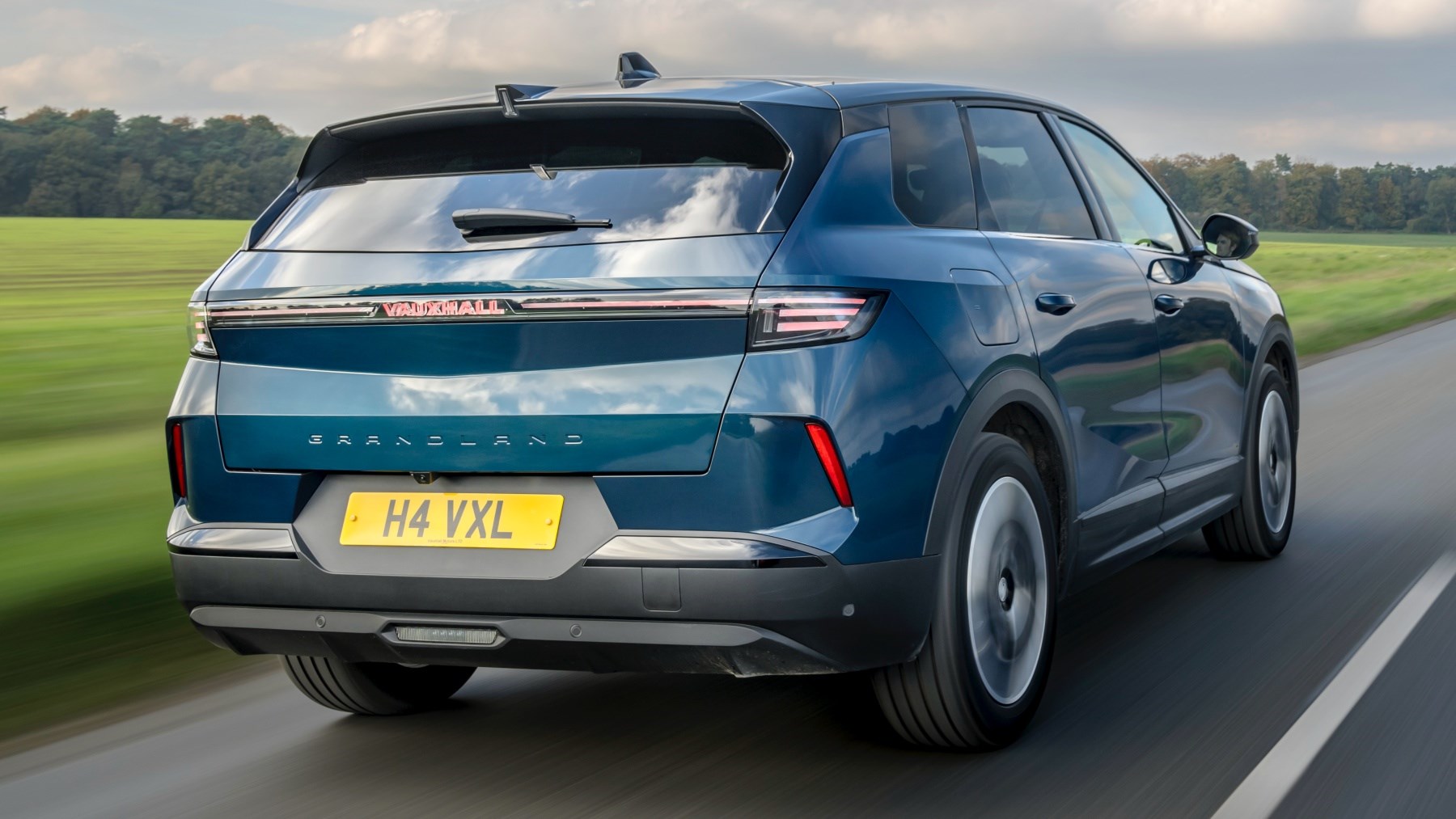
At a glance
Pros: User-friendly interior, decent economy, excellent seats
Cons: Sluggish performance, numb steering, stiff ride
What’s new?
Thanks to STLA Medium, the answer is almost everything. It’s the first non-plug-in Grandland Hybrid and gets the latest version of the 1.2-litre turbocharged Puretech three-cylinder engine.
The Grandland grows in all dimensions to increase interior space, and there’s a far more contemporary look inside. It’s not as daring as a 3008, yet still feels far more contemporary than the frumpy old interior. New tech brings a huge colour head up display, improved adaptive headlights and even illuminated badges on all but base Design trim.
What are the specs?
The new engine delivers 134bhp and is assisted by an electric motor that’s approaching 30bhp, or enough to move the Grandland at low speeds for short distances. It’s enough for just over 50mpg according to WLTP, and emits 124-126g/km. Good, but not outstanding figures.
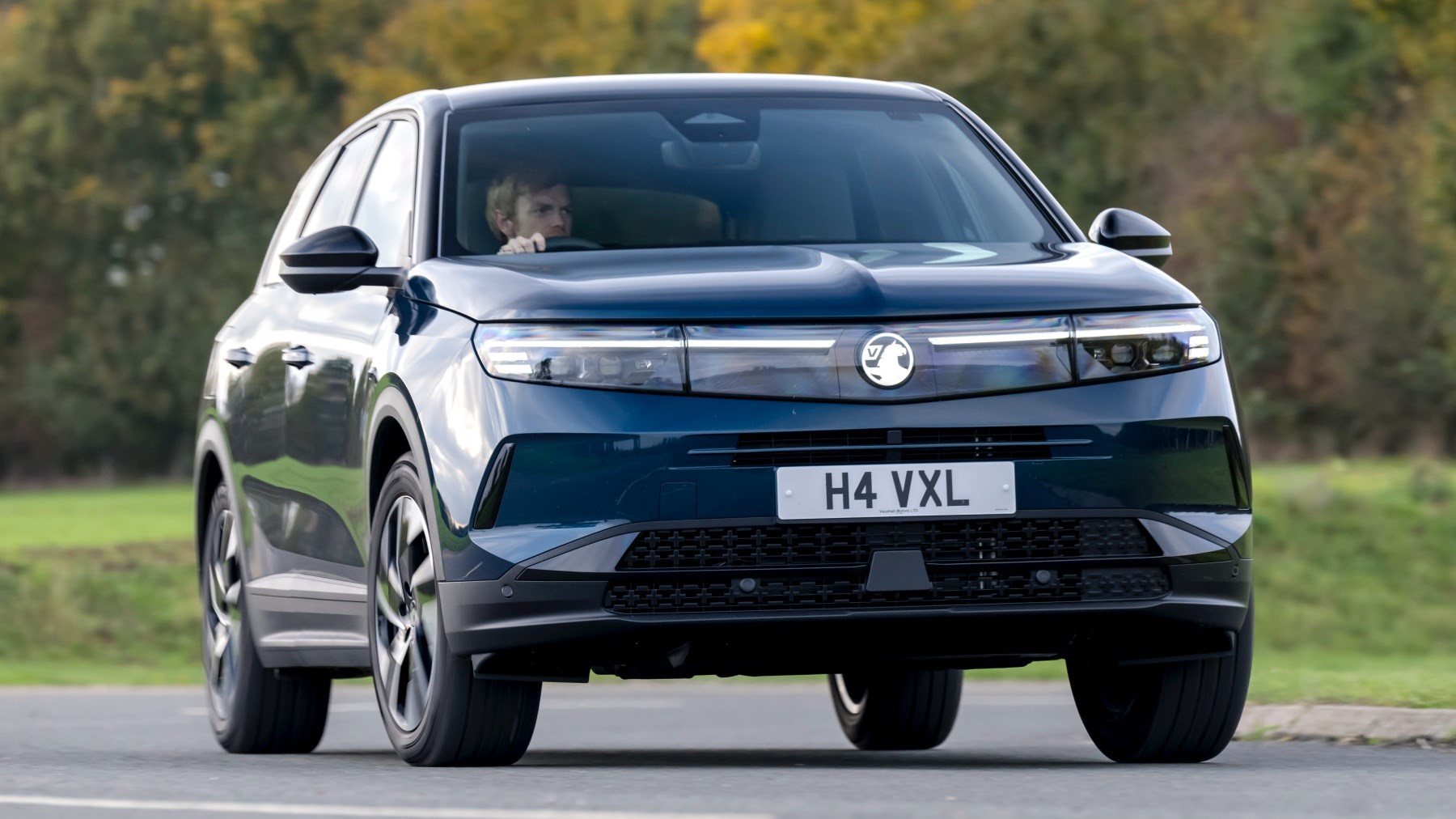
How does it drive?
We’d hoped the hybrid’s several hundred kilo weight advantage over the Grandland Electric might allow it to be a bit softer and nimbler. You certainly feel less bulk under braking and heavy cornering, but the ride is still fidgety at best.
Even on the smallest 19-inch wheels you find it picking up on every little road imperfection, with more sudden holes and humps causing the Grandland to thud and crash. The upshot is pleasingly tidy handling, although numb steering and sluggish acceleration prevents you having too much fun.
Don’t get us wrong, performance is fine if you plan on just schlepping about and are happy to vaguely keep up with traffic. If you’re occasionally known to carry out the odd single carriageway overtake or have to put up with a short motorway sliproad onto a busy road, you’ll be craving more power regularly.
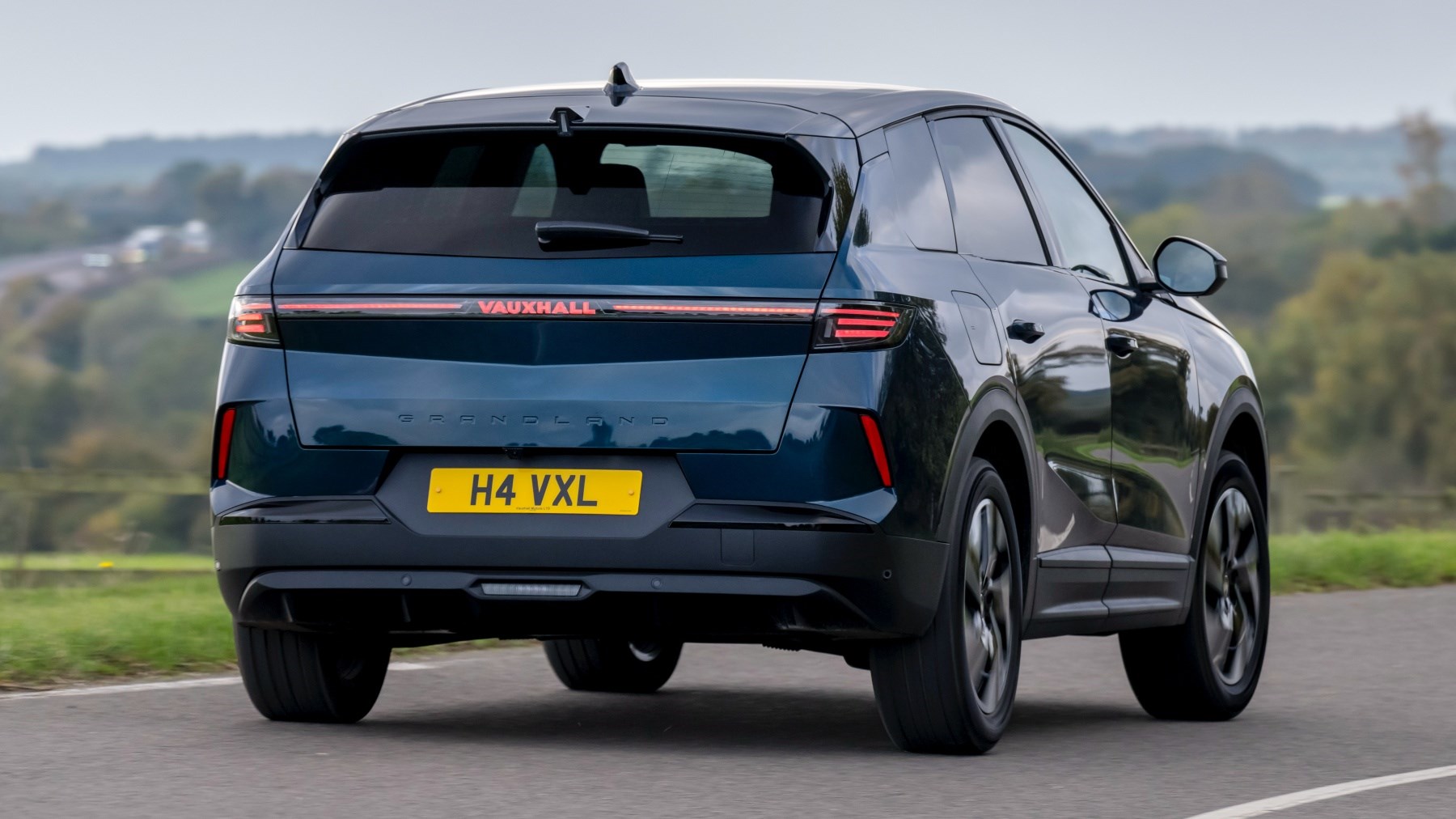
The hybrid system is at least far smoother than what you’d find in a Kia Sportage and Renault Symbioz, and efficiency isn’t bad, either. Gentle runs will see it creeping towards 50mpg, with a more spirited drive dropping this to the high-30s.
What’s it like inside?
Much the same as the electric, to be honest. The new Grandland is 173mm longer than before, which has liberated an extra 20mm of legroom for those in the back. It’s also 19mm taller and 64mm wider, helping it feel airier. There’s also enough space for a six-foot three-inch adult to sit behind themselves.
The only compelling reason to choose the old Grandland – the ergonomic seats – make a return and are better than ever. They’re approved by the AGR (a German organisation that promotes back health) and are both supportive and comfortable. If you’re liberal with the options, they now boast electronically adjustable bolsters and ventilation functions.
Legroom is more than adequate if not exceptional, with a couple of inches between his knees and the backs of the front seats. Headroom is better even with a panoramic roof fitted, although a bit more space under the front chairs for feet to go would be welcome.
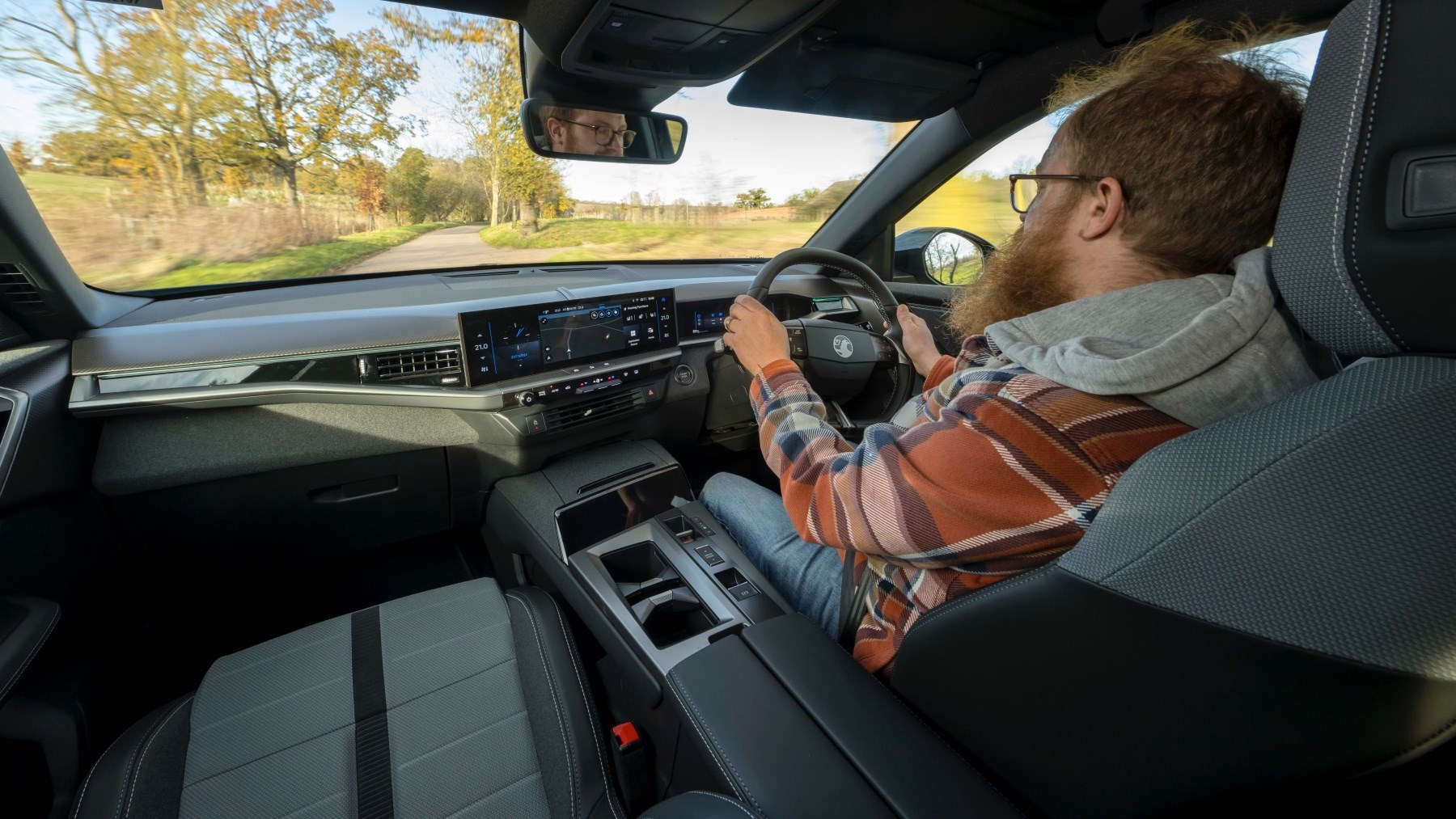
Seats-up boot capacity has increased from 514 litres to 550 litres and you get 35 litres of interior storage, including smartphone pockets in the front seat backrests and a massive centre console.
The Pixel Box on GS and Ultimate models is a fancy home for your smartphone. It’s a centrally mounted box with a wireless charging pad and smoked plastic window. In theory, this allows you to check your phone is charging without being distracted by notifications. In practice, you’ll often leave your phone in there when you get out.
Thankfully, Vauxhall hasn’t fallen into the trap of shifting all the Grandland’s switchgear onto the touchscreen. Like the Astra, it retains a row of physical climate controls on the centre console. Plus, if you find all the data from the two screens rather overwhelming, Vauxhall has added a ‘Pure’ mode that pares back the info to just the essentials. How very Saab.
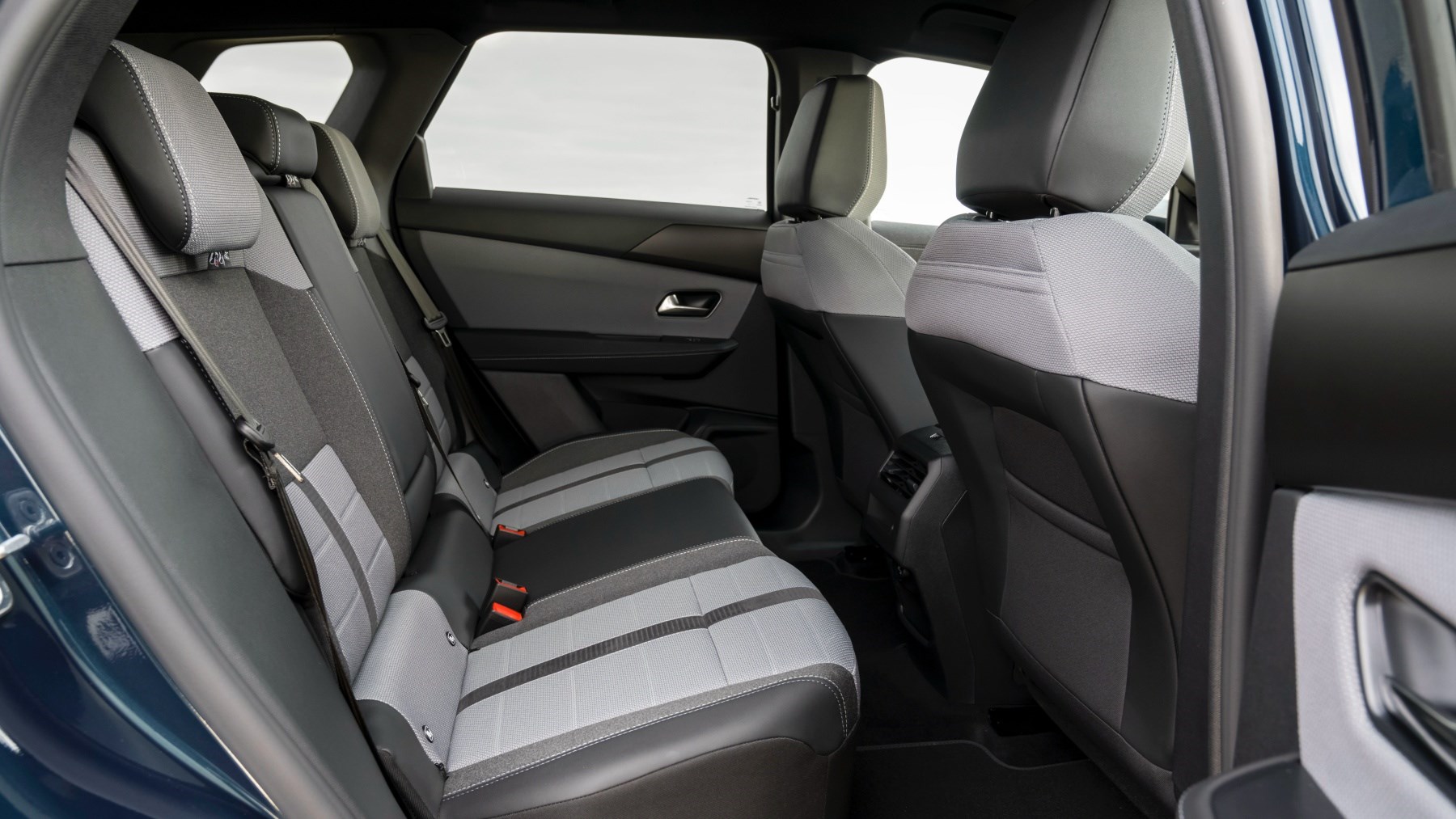
Before you buy
There are three models to choose from – Design, GS and Ultimate. Going for the £34,700 entry-level Design means you get a skinny 10.0-inch touchscreen, which at least comes with wireless Apple CarPlay and Android Auto. The good news is that they all come with adaptive cruise control, lane keep assist and traffic sign recognition.
GS trim adds the 3D Vizor with illuminated Griffin and Intelli-Lux HD headlamps. You also get larger 19-inch alloy wheels, as well as a gloss black finish for the roof, rear spoiler and front and rear bumpers. The infotainment screen grows to 16.0 inches, and satnav, that Pixel Box and ambient interior lighting join the fray. A £1950 premium isn’t too much to ask in our opinion.
Finally, the £38,400 Ultimate adds niceties, such as panoramic glass roof, a heated windscreen, a powered hands-free tailgate, and a head-up display. You also get rear cross traffic alert, lane change assist and a 360-degree surround view parking camera.
Verdict
While the Grandland is improved in many areas, it hasn’t done enough to challenge the class best, at least so far. Our biggest concerns come down to the engine, which could do with a boost in power, and the ride which is too firm.
It’s a shame as the growth spurt makes it more usable as a family car, and the interior is much more appealing than before. The Herman Miller-esque ergonomic chairs are some of the nicest we’ve tested for this segment, but excellent seats alone can’t get it to the top of the class. Equally, how the fabric-clad interior will cope with grubby hands remains to be seen, but there is a lot to like here.
There are better options, though. A Ford Kuga Hybrid is more fun and frugal, a Sportage HEV more spacious and speedy, while the aging Skoda Karoq is still a compelling choice.